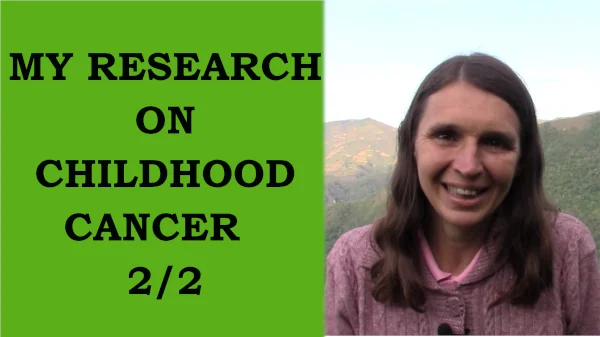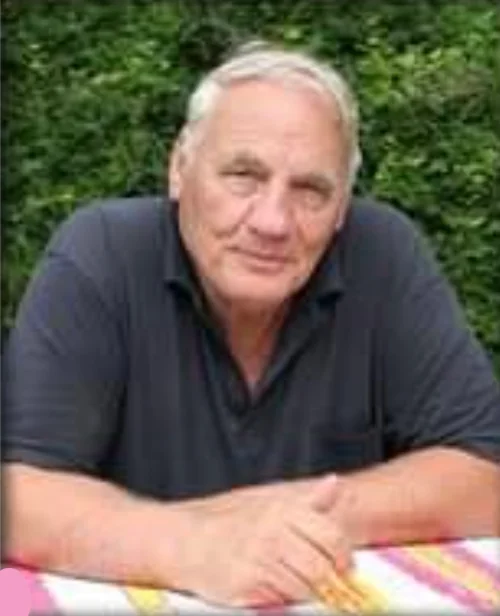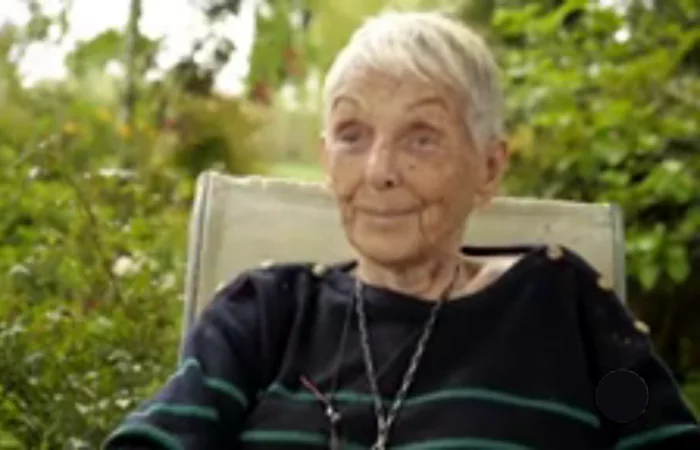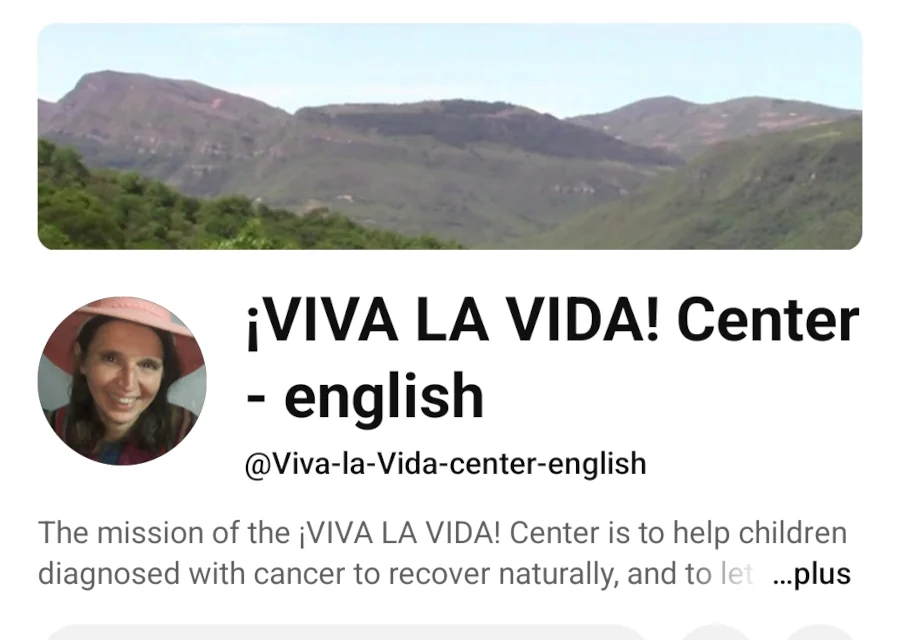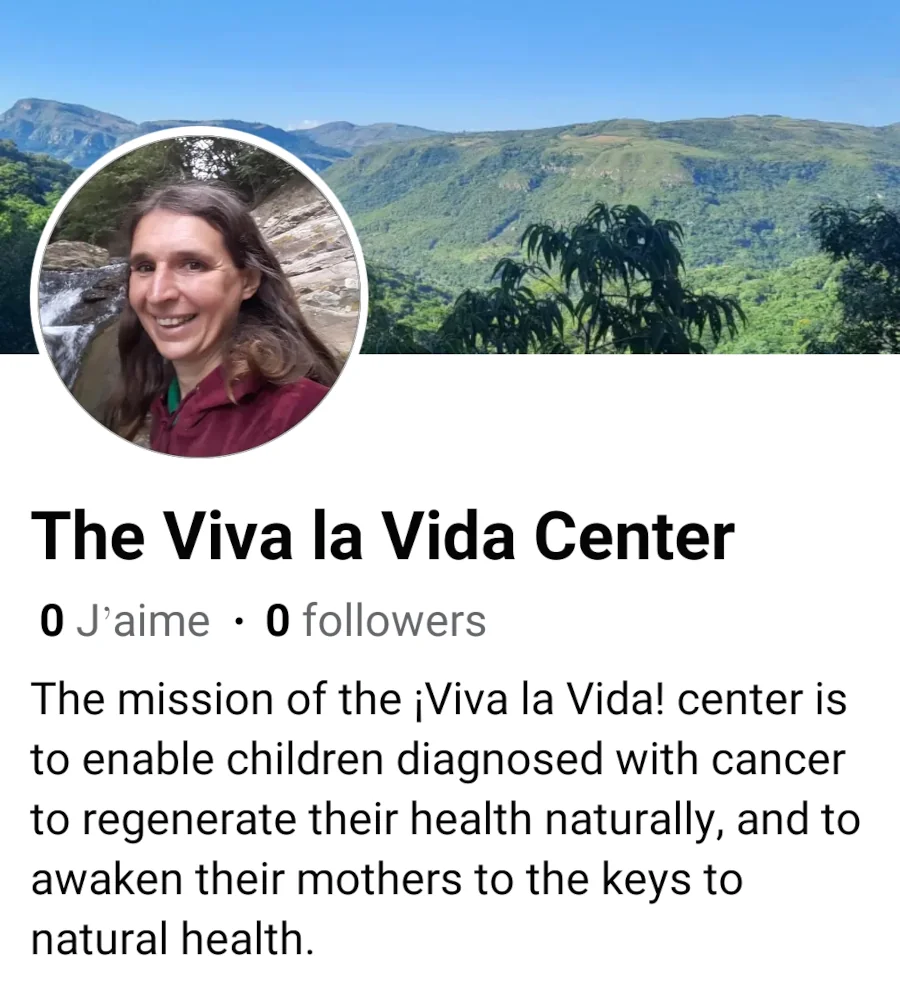

¡ Viva la Vida ! center
To offer children with cancer natural regeneration of health with all the Respect and Love they deserve.


Natural approaches to cancer by scientists
Otto Warburg’s discoveries on cancer metabolism
The scientist who discovered that cancer is a dysfunction of cellular metabolism
Considered one of the greatest researchers of the 20th century in cellular physiology, Otto Heinrich Warburg was a German physician and biochemist, renowned for his discoveries about cellular life. Awarded the Nobel Prize in Physiology or Medicine in 1931 for his work on the « respiratory enzyme », he demonstrated how cells produce energy. He then explored in depth the mechanisms of cellular respiration. He discovered that in cancer cells, mitochondria no longer use available oxygen properly, leading to an abnormal reliance on glucose fermentation. His research revealed that cancer arises when natural physiological conditions are not maintained. It also showed that pollution and stress can harm life, disrupt cellular metabolism, and promote tumor growth. This vision of cancer reminds us how essential it is to remain in harmony with the natural laws of life in order to preserve or restore health.
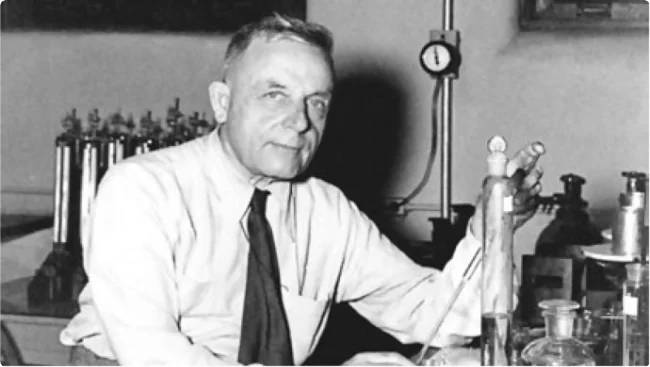
1. A Nobel Prize–winning physician for his discoveries in cell biology
Born in 1883 in Freiburg im Breisgau, Germany, Otto Heinrich Warburg was the son of a renowned physicist. From an early age, he pursued dual training in chemistry and medicine, earning doctorates in both. He then joined the prestigious Kaiser Wilhelm Institute in Berlin (today the Max Planck Institute), where he would devote his entire life to exploring cellular life.
Driven by a desire to measure life with precision, he developed innovative techniques and instruments, including the famous Warburg manometer, capable of recording in real time the exchanges of oxygen and carbon dioxide in living tissues. This quest reflected his obsession with understanding how cells capture oxygen and transform nutrients into energy.
In 1931, this relentless research was rewarded with the Nobel Prize in Physiology or Medicine for his discovery of « the nature and mode of action of the respiratory enzyme ». His work, recognized as a major breakthrough, described with unprecedented rigor the oxidation–reduction reactions that drive the respiratory chain within mitochondria.
Strengthened by this international recognition, Warburg pursued his experiments with ever greater rigor. Convinced that disease results from an energy imbalance in cells, he turned his attention to tumor metabolism and highlighted the dysfunction specific to cancer cells.
Despite threats linked to his Jewish origins in Nazi Germany, he refused exile to the United States. Ironically, Hitler—whose mother had died of breast cancer—wanted to keep the best experts in this field nearby. Thus, even though his laboratory was relocated in 1943 and later bombed by the Soviets in 1945, Otto Warburg remained in Germany, protected by his scientific prestige.
After the war, he published two landmark works and continued his research almost without interruption until his death in 1970. An undisputed pioneer in understanding cellular metabolism and cancer, he paved the way for oncometabolism, the discipline that studies metabolic alterations in cancer cells. Even today, researchers such as Dr. Laurent Schwartz draw on his discoveries to develop metabolic approaches to cancer treatment (see the article The work of Dr. Laurent Schwartz on this subject).
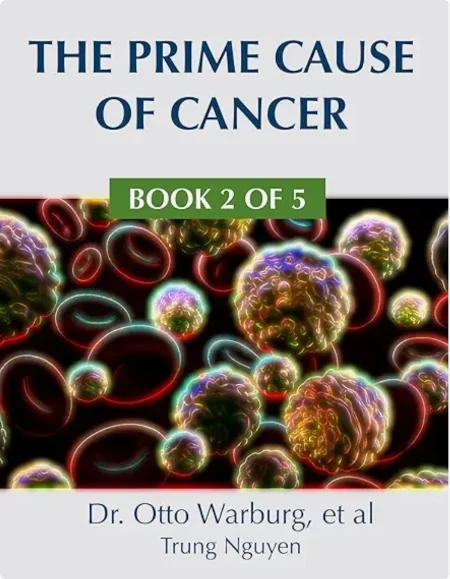
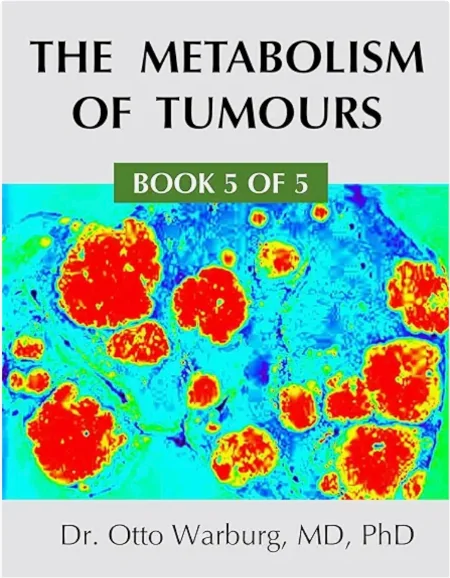
2. A detailed understanding of the mechanisms of cellular respiration
Otto Warburg devoted most of his scientific career to studying cellular respiration, the process by which cells convert glucose into energy with the help of oxygen. His research showed that cellular respiration is not merely the « combustion » of sugar, but a highly organized mechanism that takes place within small internal structures called mitochondria. These true energy powerhouses enable cells to make optimal use of oxygen to produce ATP (adenosine triphosphate), regarded as the universal energy « currency » of all living cells.
Warburg demonstrated that cellular respiration depends on a complex chain of biochemical reactions integrated into the Krebs cycle. This process releases a large amount of energy from a small amount of glucose—provided that sufficient oxygen is available and the mitochondria are functioning properly. In a healthy cell, oxygen allows nutrients to be transformed into energy in the most efficient way: cellular respiration then becomes synonymous with balance and effectiveness. When it proceeds harmoniously, it nourishes life and sustains all vital functions.
By studying cellular respiration with exceptional rigor, Warburg opened a new window on biology. His work revealed that oxygen is not only indispensable for breathing through the lungs, but also lies at the very heart of each cell’s health, ensuring its energy, balance, and vitality.
3. The Warburg Effect: highlighting the dysfunction of cancer cells
Otto Warburg identified a metabolic peculiarity specific to cancer cells, now known as the “Warburg Effect.” He discovered that even in the presence of oxygen, a cancer cell ceases to breathe efficiently and instead ferments glucose in its cytoplasm. This process produces very little energy (ATP) but generates large amounts of lactic acid.
By studying this paradoxical phenomenon, Warburg understood that in cancer cells, mitochondria are damaged by imbalances in the organism and become dysfunctional, so their oxidative respiration no longer works properly. To compensate for this failure, the cell switches to fermentation, producing an excess of lactic acid.
This strategy is far less efficient for generating energy than the aerobic respiration of healthy cells. However, it enables cancer cells to use glucose to build the components needed for rapid multiplication. In other words, instead of fully oxidizing sugar into carbon dioxide, they divert its carbon to produce growth materials. Warburg called this process « tumor metabolism »—the particular way cancer cells use sugar to multiply rather than convert it into energy.
He concluded that cancer was, above all, a disease of cellular metabolism—and more specifically, a loss of normal cellular respiration. In his words : « The prime cause of cancer is the replacement of the respiration of oxygen in normal body cells by a fermentation of sugar ».
This observation connects with the notion of « terrain » (see the article The concept of terrain in natural health). In a healthy organism, low in toxins and well oxygenated, cells breathe normally and have no reason to ferment. But when the terrain deteriorates—due to stress, pollution, or toxin accumulation—it becomes acidic. In this toxin-laden, oxygen-deprived environment, mitochondria are subjected to oxidative stress and repeated damage. Gradually, cellular respiration becomes impaired, the natural balance of physiology is lost, and conditions emerge that favor the proliferation of cancer cells.
4. Cancer as the consequence of failing to respect physiology
Otto Warburg stressed that cancer does not arise by chance or as some mysterious inevitability. For him : « Cancer is a disease of cellular physiology. When we fail to respect the physiology of our body—through poor diet, poor breathing, increased pollution, or unfavorable environmental conditions—we create a terrain conducive to the development of cancer. »
Physiology refers to the set of natural mechanisms that ensure the proper functioning of the body: cellular respiration, acid–base balance, circulation of fluids, waste elimination, and tissue regeneration. When these mechanisms are respected, cells breathe, nourish themselves, and renew normally. But when these natural laws are violated by unhealthy lifestyles, the terrain deteriorates and ceases to fulfill its protective role.
In this context, mitochondria lose their ability to respire efficiently, and the cell adopts a fermentation-based metabolism. Cancer then appears as the consequence of a physiological drift rather than as an arbitrary anomaly.
Concretely, several factors converge toward this imbalance:
- external and internal pollution (smoke, nitrogen oxides, solvents, fine particles), which irritates, generates oxidative stress, and limits oxygen availability;
- sedentary lifestyle and prolonged sitting, which reduce pulmonary ventilation, tissue perfusion, and the mitochondria’s capacity to use oxygen;
- an ultra-processed diet, rich in refined sugars and additives, which provokes glucose spikes and easily fuels glycolysis;
- chronic stress, which continuously activates catabolic hormonal pathways, disrupts sleep, and increases the body’s « alert » energy demand;
- household or occupational toxins (pesticides, heavy metals, solvents), which damage enzymes and cellular membranes.
Insidiously, these daily aggressions disrupt cellular signaling, overload the organism, and weaken mitochondria. Gradually, cellular respiration falters: even in the presence of oxygen, cells stop using it properly and shift to anaerobic fermentation.
Warburg’s discoveries remind us that when the internal environment becomes loaded with fermentable toxins, the cell enters a « crisis economy » : it survives and multiplies through fermentation. Conversely, reducing the toxic burden and restoring the body’s major physiological balances can calm inflammation and restore the natural respiration of cells.
5. The need to restore physiological balance to heal cancer
Otto Warburg showed that cancer arises from a profound disturbance of cellular respiration. Therefore, the path to healing is to restore what has been lost: the intimate balance of physiology. The aim is not to destroy cells labeled as « abnormal », but to recreate an internal environment where mitochondria can breathe fully and cells can function harmoniously.
Healing cancer thus means recreating a favorable environment in which cellular respiration can take place optimally. The first step is to identify, as precisely as possible, the factors responsible for the imbalance, in order to act at the root. The goal is to reduce the toxic load that blocks enzymes, restore an acid–base balance conducive to oxygenation, and limit oxidative stress that damages cell membranes. Just as a burn victim must strictly avoid heat, a person with cancer must protect themselves from sources of stress and pollution: chemicals, pesticides, heavy metals, processed and devitalized foods, etc.
It is then essential to support the elimination of waste to help the body free itself from what hinders it. This involves stimulating the natural emunctories (liver, kidneys, lungs, skin) through fasting or, at the very least, marked caloric restriction, abundant hydration, deep breathing, and activation of the lymphatic system through movement and massage.
The next phase is to rebalance metabolism: respecting physiological rhythms, ensuring sufficient rest, cultivating restorative sleep, practicing moderate physical activity, exposing oneself to the beneficial light of the sun, nurturing inner serenity, and adopting a light, living diet.
By regenerating the terrain, mitochondria regain their full functionality; cancer cells start to breathe again and may return to normal. This rehabilitation of physiology paves the way for true regeneration of the organism through natural, gentle, and life-affirming healing.
Conclusion: a fundamental insight into the origin of cancer
Otto Warburg, as a rigorous scientist, revealed a fundamental aspect of cancer: its metabolic origin. By showing that the disease takes root in an energy imbalance of cells, he opened a radically new path: cancer is neither a mysterious fate nor an external enemy to be fought, but the result of a physiological imbalance that can be corrected. Thus, instead of viewing the disease as an anomaly to be destroyed, we can welcome it as a warning signal—an invitation to restore what sustains life. The true challenge is therefore not to fight cancer, but to return to the body the conditions of its deep vitality.
Otto Warburg reminded us of a simple yet essential truth: life rests on subtle and fragile balances. When we cease to respect them, physiology falters and drives the cell into a « crisis economy ». But when we restore these balances, the cell regains its natural respiration, health returns, and the body can self-repair.
This is precisely the path we follow at the ¡Viva la Vida! center, to offer children with cancer who come to stay here a natural regeneration of their health with all the respect and love they deserve. They are immersed in an environment where nature makes this miracle possible—thanks to the beneficial rays of the sun, the pure mountain air, the clear waters of rain and river, a healthy and living diet partly produced on site, and a lifestyle in harmony with natural rhythms and free from stress. These life-giving conditions allow the body to gently re-harmonize, while the disease fades naturally, safely, and sustainably.


« Our body is a divine, marvellous and magical creation that was originally designed to function perfectly and enable us to live in excellent health throughout our lives.
If cancer does occur, let’s have the humility to recognize that our body may have been subjected to a level of stress beyond what it was capable of handling.
By identifying with honesty and clarity the causes of this terrible disease, it becomes possible to act directly at the root of the problem with awareness, intelligence and love. It’s in this spirit that we can choose to take the path of natural healing, the path of moving forward in harmony with the laws of life to return to the state of full health that is each of us’ birthright. »
This article was written by Claire Loiseleur, who is the founder and animator of the ¡Viva la Vida! center, whose mission is to offer children with cancer natural regeneration of health with all the Respect and Love they deserve.
To find out more about the ¡Viva la Vida! center and how it works, I cordially invite you to :
In addition, to go further and understand what the ¡Viva la Vida! center is basing on to fulfill its mission serving children with cancer, I invite you to :
Here is a list of compelling and evidence-based articles about NATURAL APPROACHES TO CANCER BY SCIENTISTS :

Go to the YouTube channel ¡VIVA LA VIDA! Center – english :
See the Facebook page : The Viva la Vida center
The Facebook group OFFERING MY CHILD WITH CANCER A NATURAL HEALING is a warm and friendly forum for exchange on the theme of Healing pediatric cancer using natural methods. It is open to all parents who have a child with cancer and who are curious to discover the extent to which the keys to natural health can help regenerate their child’s health. The aim is to help each other move forward, beyond the obstacles we face, in order to offer children with cancer natural healing with all the respect and love they deserve.

« If your child has cancer, it means that his or her body is no longer able to withstand the level of stress to which it is subjected, as a result of an environment and lifestyle that are carcinogenic by definition.
Thanks to the law of homeostasis, his or her body is able to destroy the cancer cells it has produced itself.
However, this implies making radical changes in his or her life, by choosing to move towards an environment and lifestyle that I call “carcinofugal”, which means conducive to the disappearance of cancer…»




